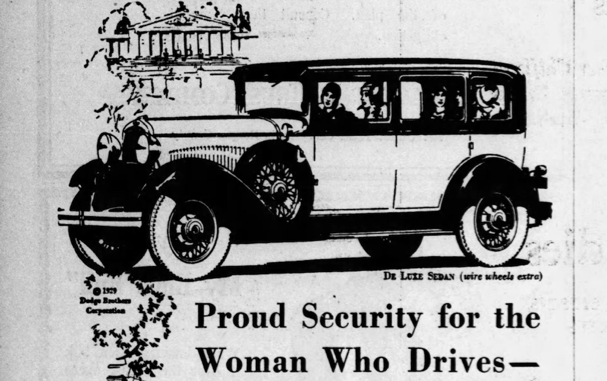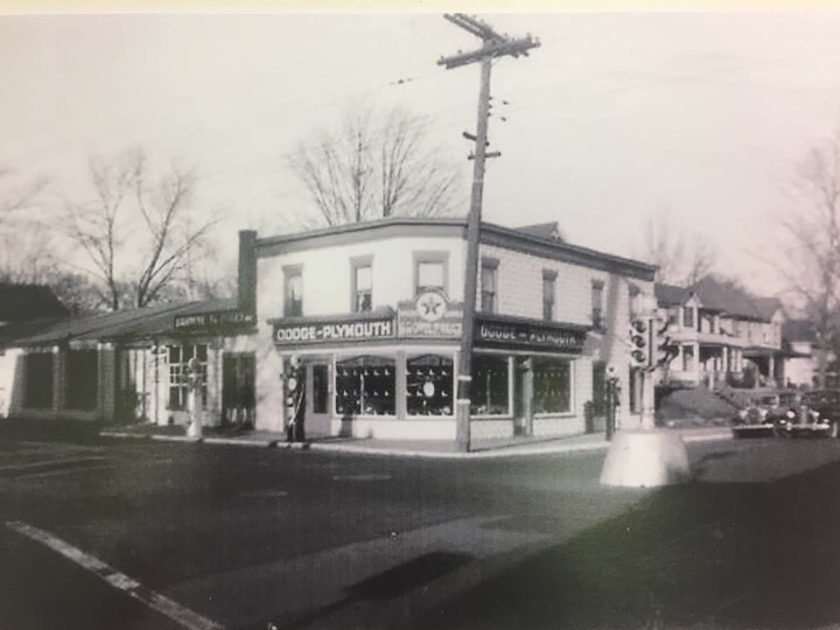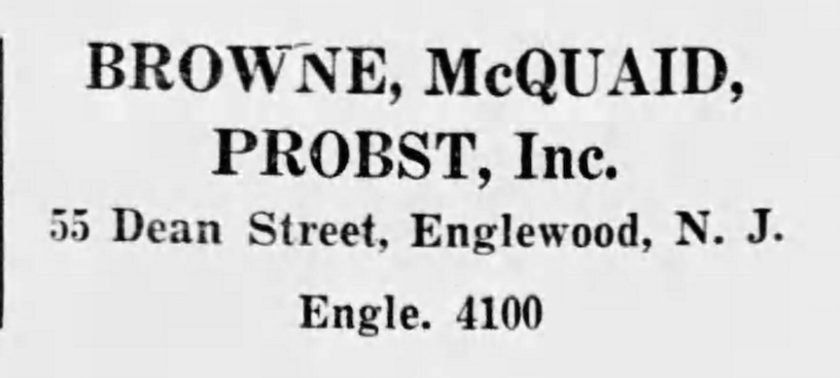
We go back 90 years to April 1929 for this advertisement, which saw Dodge marketing to women at a time when it was mostly men behind the wheel.
“From the dainty wing-tipped radiator to the graceful curve of the rear fenders, the new Dodge Brothers Six is a car women invariably admire,” reads the advertisement. “Its brisk alertness in starting at the touch of the finger, the accessibility of pedals and the simplicity of controls, the ease with which it handles and the feeling of security and protection which its Mono-piece body imparts, all recommend it as the ideal woman’s car.”

Dodge dealer Browne & McQuaid had locations in Hackensack, Closter, Westwood, and Englewood. The Westwood location was at Five Corners (the intersection of Westwood Avenue and Kinderkamack Road) and is shown below in a photograph that dates to the 1940s. Business partners Mr. Becker and Mr. Walther, whose names are shown in the advertisement, took over the business in 1928 and continued to sell the same line of cars. The shop also went by the name Five Corners Garage.

In 2019, there are more females than males holding driver’s licenses in the United States. That definitely was not always the case. While some women might have had a hand in choosing the family car a century ago, they seldom got behind the wheel themselves. In the earliest days of motoring, automobiles were not seen as a necessity of everyday life; rather, they were a novelty to be enjoyed by men of wealth.
Many elements of early 20th century automobiles made them off-putting to the women of the day: the cars had to be hand-cranked to start, they were heavy and difficult to steer, and they were prone to mechanical and tire trouble on the road. Without a working mechanical knowledge, a driver could be stranded until a Good Samaritan came along. Further, roads were bad in those days before paving. Cars could get stuck in the mud or skid into a ditch—a tow rope, shovel and tire chains were standard pieces of touring equipment back then.
“Today all that is changed. A woman can drive from Michigan to Florida on an uninterrupted ribbon of paved road over 1,000 miles long. She can drive almost anywhere in the United States or Canada on roads that may be better paved than the streets in her own home city,” reads the 1932 study “Increasing Ownership and Use of Motor Cars by Women.”
It continues, “Today, not only are women in the family the determining influence in the purchase of a car, they are at the wheel, weaving confidently through crowded traffic, driving at express-train speed along the highways, parking with the dexterity of experts, shifting gears noiselessly, and steering with one-finger control.”
William Browne first opened the Closter Garage in 1911 (the building is still standing at 395 Closter Dock Road, opposite County Road). In 1920 he joined in business with Englewood natives Robert McQuaid and Arnold Probst.
McQuaid was born at Englewood in 1893 and went through the local school system. After graduating from the city’s high school, he became involved in the automotive industry for a time before being drafted into the Army during World War I. He was sent overseas, where he saw action on the battlefield at Meuse-Argonne and Chateau-Thierry. After his return home, he joined Browne’s dealership in Closter.

DID YOU KNOW? In 1909, 22-year-old Alice Huyler Ramsey, a housewife from Hackensack, became the first woman to drive across the United States from coast to coast. She did it, in part, to prove that women were competent behind the wheel.
—Kristin Beuscher
